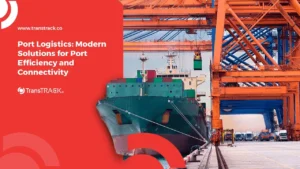Know the Types, Capacities, How it Works, and How to Maintain a Bus Engine!
Posted on February 25, 2025 by Nur Wachda Mihmidati

Bus engine is one of the important components in a bus vehicle. Bus engines have a very vital role in maintaining the performance and reliability of bus vehicles. A good condition of the bus engine can ensure the safety and comfort of passengers, and can help optimize the performance of the bus fleet as a whole. Therefore, it is important for bus entrepreneurs to understand how bus engines work, types, capacities, and maintenance in order to maintain the reliability and performance of their vehicles.
Bus Engine Type
Bus engines can be divided into several types based on the fuel used, engine type, and function. The following is a more in-depth explanation of the types of bus engines:
Diesel Engine
Diesel engines are the most common type of engine used in buses. These engines use diesel fuel and have better fuel efficiency than gasoline engines. In addition, diesel engines are also more durable and can work under more demanding conditions.
Gasoline Engine
Gasoline engines in buses are rarely used because the fuel is more expensive and less efficient than diesel engines. This engine is suitable for use in small or medium buses with short travel distances.
Gas Engine
Gas engines on buses can be fueled by natural gas (CNG) or liquefied gas (LPG). Gas engines are cleaner and more environmentally friendly than diesel or gasoline engines. However, the cost of procuring and installing gas infrastructure can be more expensive.
Electrical Machinery
The electric engine on the bus uses an electric motor and battery as its energy source. This engine is very environmentally friendly and does not emit exhaust emissions. Electric engines are suitable for use on city buses or shuttle buses with short travel distances.
Hybrid Engine
Hybrid engines on buses use two energy sources, a fuel engine and an electric motor. This engine can save fuel and reduce exhaust emissions. Hybrid engines are suitable for use on buses with longer travel distances.
Gas Turbine Engine
Gas turbine engines on buses use turbines as a power source and fuel gas as an energy source. These engines are rarely used on buses due to their high cost and inefficiency for short travel distances.
Hydrogen Engine
Hydrogen engines in buses use hydrogen as an energy source and produce water as the only by-product. They are very environmentally friendly and efficient, but are still rarely used due to their high cost and limited hydrogen filling infrastructure.
Those are some types of bus machines based on fuel, engine type, and function. Choosing the right type of bus engine will affect fuel efficiency, performance, and environmental impact.
Machine Bus Capacity
Bus engine capacity can be defined as the engine’s ability to produce power, which can be measured in horsepower (HP) or kilowatts (kW). The engine capacity required on a bus depends on various factors, such as the size and weight of the bus, the type of travel route, and the passenger and cargo load.
The following is a more in-depth explanation of bus machine capacity based on type and size:
Micro Bus
Micro buses have an engine capacity of about 50-120 HP and usually use gasoline or diesel engines. These engines are usually sufficient to handle relatively light passenger and cargo loads, as well as short or intra-city travel routes.
Medium Bus
Medium buses have an engine capacity of around 120-200 HP and usually use diesel engines. These engines are powerful enough to handle larger passenger and cargo loads, as well as longer and more strenuous travel routes.
High Bus
Tall buses have an engine capacity of around 200-400 HP and usually use diesel engines. These engines are powerful enough to handle very large passenger and cargo loads, as well as very long and strenuous travel routes.
Electric Bus
Electric buses have an engine capacity in kilowatts (kW), which can vary depending on the type of battery and electric motor used. Electric engines usually have a lower capacity than diesel or gasoline engines, but are sufficient to handle city trips or short distances.
Hybrid Bus
Hybrid buses use two energy sources, a fuel engine and an electric motor. The engine capacity of hybrid buses is usually smaller than that of diesel or gasoline buses, but it is enough to handle long-distance travel with fuel economy.
Proper selection of bus engine capacity will affect the performance, fuel efficiency, and reliability of the engine. Therefore, it is very important to consider the factors affecting engine capacity selection when purchasing or designing a bus.
How the Bus Machine Works
The bus engine is the most important part of a bus vehicle, as it serves to generate the power needed to move the vehicle. The working process of a bus engine can be explained simply as follows:
Air withdrawal
The working process of a bus engine starts by drawing air into the combustion chamber through the intake manifold. The incoming air is then mixed with fuel, be it gasoline or diesel.
Compaction of air and fuel mixture
Once the air and fuel mixture enters the combustion chamber, the piston begins to move upwards and presses the mixture into a smaller space, resulting in compaction.
Combustion process
After the air and fuel mixture is compressed, the ignition or fuel injection system releases sparks or fuel spray into the combustion chamber. This combustion process produces the power that will be used to drive the vehicle.
Piston movement
The power generated by combustion pushes the piston down, so the crank starts moving and drives the wheels. Once the piston reaches the bottom position, it returns to the starting position and the air draw process begins again.
Wheel drive
The power generated by the movement of the piston is then transmitted to the transmission, which will convert the power into a rotation motion on the wheels of the vehicle.
The working process of a bus machine may vary depending on the type of engine and technology used. But in general, the bus machine work process above describes how the bus engine generates the power needed to move the vehicle. It is important to pay attention to maintenance and regular replacement of parts, so that the bus machine can operate optimally and last long.
How to maintain a bus machine based on type and capacity
Maintaining bus engines is essential to maintain vehicle performance and reliability. A well-maintained bus engine can also save operational costs and extend the vehicle’s lifespan. Here are some tips on maintaining a bus engine based on its type and capacity:
Micro Bus
- Make sure the micro bus machine always gets regular servicing every 5,000 km or 6 months.
- Check the quality of the engine oil and make sure to change the oil according to the manufacturer’s recommendations.
- Clean the air filter regularly, at least every 10,000 km or 1 year.
- Avoid driving the bus at high speeds for extended periods of time.
- Check and replace spark plugs regularly, at least every 20,000 km or 2 years.
Medium Bus
- Perform regular engine servicing every 10,000 km or 6 months.
- Change the engine oil every 10,000 km or according to the manufacturer’s recommendation.
- Make sure the air filter is clean and replaced every 20,000 km or 1 year.
- Check and replace the spark plugs every 30,000 km or 2 years.
- Make sure the engine cooling system is functioning properly and the coolant is changed every 2 years.
High Bus
- Perform regular engine servicing every 15,000 km or 6 months.
- Change the engine oil every 15,000 km or according to the manufacturer’s recommendation.
- Make sure the air filter is clean and replaced every 30,000 km or 1 year.
- Check and replace the spark plugs every 40,000 km or 2 years.
- Make sure the engine cooling system is functioning properly and the coolant is changed every 2 years.
- Check and replace the battery regularly, at least once every 3 years.
Electric Bus
- Have your engine serviced every 20,000 km or once a year.
- Ensure that the battery is fully charged and not lacking electrolyte water.
- Check the cooling system of the electric motor and make sure there are no leaks.
- Ensure that the battery and electric motor temperatures are within safe limits.
Hybrid Bus
- Have your engine serviced every 15,000 km or 6 months.
- Change the engine oil every 15,000 km or according to the manufacturer’s recommendation.
- Make sure the air filter is clean and replaced every 30,000 km or 1 year.
- Check and replace the spark plugs every 40,000 km or 2 years.
- Make sure the engine cooling system is functioning properly and the coolant is changed every 2 years.
- Check the battery charging system and ensure that the hybrid battery is fully charged and not lacking electrolyte water.
- Check the regeneration system and make sure it is working properly.
- Check the condition of the electric motor and make sure there is no damage or leakage.
Things to Pay Attention to in Caring for Bus Machine
In general, there are several things that need to be considered in maintaining the bus machine, including:
- Perform regular engine servicing in accordance with the manufacturer’s recommendations.
- Change the engine oil regularly according to the manufacturer’s recommendations.
- Check and replace the air filter regularly to ensure the air entering the engine is clean.
- Check and replace spark plugs regularly to maintain optimal engine performance.
- Ensure that the engine cooling system is functioning properly and that the coolant is changed regularly.
- Check the fuel system and ensure there are no leaks or damage to the fuel system.
- Avoid driving with a cold engine and avoid turning off the engine suddenly after driving for a long time.
- Ensure that refueling is in accordance with the type of fuel recommended by the manufacturer.
By maintaining the bus machine regularly, it is expected that the bus machine can last longer and maintain optimal performance. In addition, good bus machine maintenance can also save operational costs and reduce the risk of more serious engine damage in the future.

To facilitate the maintenance of bus machines, TransTRACK as one of the transportation and logistics solution providers has developed a Vehicle Maintenance System that can assist bus operators in monitoring and maintaining their vehicles effectively and efficiently. By using this system, bus entrepreneurs can monitor the condition of the bus machine in real-time, set periodic service schedules, and optimize fuel usage.
By using the Vehicle Maintenance System from TransTRACK, bus operators can ensure that their bus engines are always in optimal condition and can operate safely and efficiently. Thus, it can help increase productivity and optimize the performance of the bus fleet.
Recent Post
Topic :
 Bahasa Indonesia
Bahasa Indonesia









